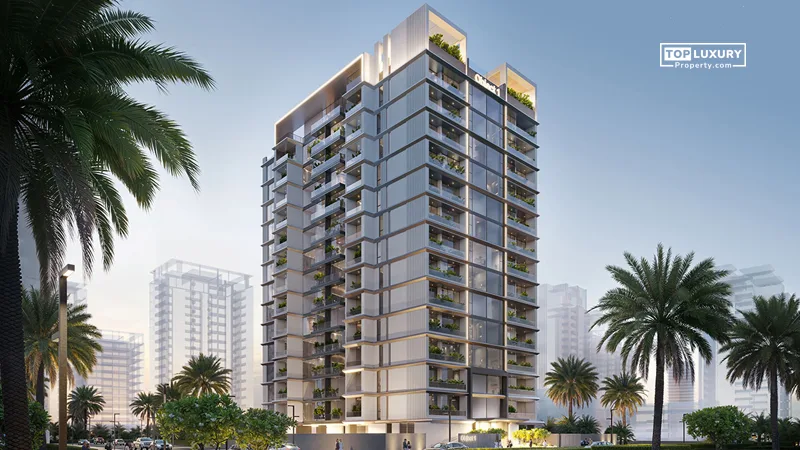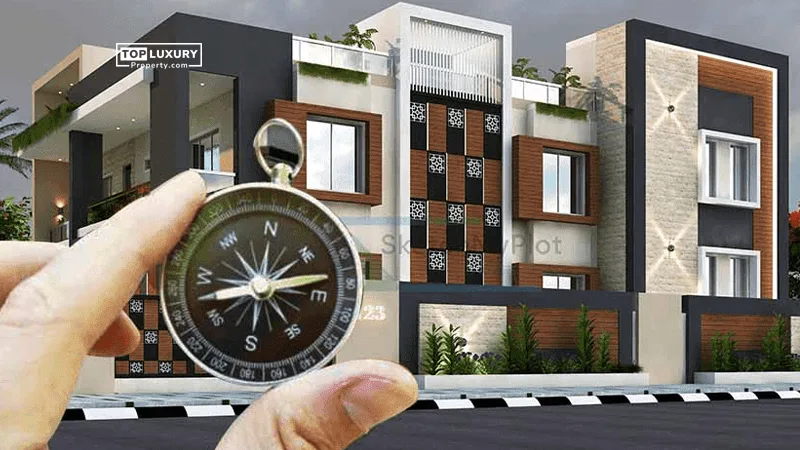Owning a home involves more than just the initial purchase. It represents a dedication to long-term management, ensuring that renters have a secure & comfortable place to live while the building remains a valued asset. The development of a complete property maintenance plan is a crucial tool in upholding this commitment. This manual acts as a road map for landlords & property owners as they methodically take care of their investments, from basic maintenance to unanticipated repairs.
A well-designed property management plan includes a proactive & all-encompassing approach to property care in addition to dealing with current difficulties. Landlords & property owners may adapt their maintenance initiatives to the distinctive features of their properties, the needs of their tenants, & the requirements of the community by taking a number of strategic actions.
The process of creating a successful property maintenance plan is collectively defined in this document’s eight crucial subheadings. Each subsection examines a crucial aspect of planning for property maintenance, from evaluating & cataloguing the property’s state to creating precise maintenance targets that are in line with long-term goals. This complete strategy includes creating a successful budget, deciding between proactive & reactive maintenance, scheduling & monitoring activities, hiring reputable contractors, taking into account seasonal factors, & encouraging open tenant communication.
Landlords & property owners may confidently & competently negotiate the challenging terrain of property management by comprehending & putting these crucial procedures into practice. This paper serves as a roadmap through the complexities of property maintenance planning, enabling property owners to protect their assets & foster a peaceful living environment that is advantageous to both renters & owners.
Assessment & Inventory: Taking Stock of Your Property’s Needs
Taking Stock of Your Property’s Needs
An exhaustive evaluation & inventory of your property are the first steps in developing a detailed property care plan. This important stage helps you recognise current difficulties, foresee possible concerns, & properly prioritise work. It also acts as the basis for all subsequent maintenance efforts. Landlords & property owners may protect the long-term health & worth of their properties by investing time in this first examination.
Start by doing a thorough inside & outdoor tour of your home. Keep an eye out for any obvious signs of wear & tear, such as flaking paint, cracked tiles, or broken appliances. Look for indications of leaks, bug infestations, or water damage. Additionally, go at the plumbing, foundation, & structural components like the roof. You may make a detailed checklist of maintenance tasks with the aid of this evaluation.
Equally crucial is a list of the property’s valuables. Record the age & condition of each appliance, fixture, & system that is installed on the property. This inventory will help in tracking each item’s lifespan & identifying when improvements or replacements could be required.
Take into account hiring a qualified inspector or contractor to assist you with your evaluation & inventory. Their experience may bring to light hidden problems that could otherwise go missed, providing you a more realistic view of the upkeep requirements for your property.
Setting Maintenance Goals: Defining Your Property’s Long-Term Health
Setting Maintenance Goals
Setting specific maintenance goals is the next crucial stage in developing an efficient property maintenance plan once you’ve finished a comprehensive examination & inventory of your property. These objectives act as the guiding principles that direct your maintenance work & guarantee the long-term safety, usefulness, & worth of the property.
Outline your main goals to get started. Do you want to prioritise the comfort & safety of the tenants above the property’s beauty or its energy efficiency? You may modify your maintenance plan to target certain requirements & outcomes by defining your goals.
Think about both immediate & long-term objectives. Addressing urgent repairs or faults found during the evaluation process may be included in short-term goals. Long-term objectives could include tasks like upgrading the sustainability of the property or replacing important systems or common spaces.
Every objective needs to be SMART, or precise, measurable, attainable, relevant, & time-bound. This strategy guarantees that your maintenance plan is not only thorough but also feasible & practical.
Budgeting for Success: Allocating Resources Wisely
Allocating Resources Wisely
Financial prudence & adequate property care go hand in hand. Setting up a thorough budget that fits your property’s demands & your financial means is essential to guarantee the smooth execution of your maintenance plan.
Examine the evaluation & inventory information you have obtained to start. You may use this information to determine what needs fixing right now, what needs replacing soon, & what requires long-term improvement. Make a thorough budget using these suggestions, making sure to include labour costs, material costs, contractor fees, & any unforeseen complications.
Striking a balance between immediate maintenance expenses & long-term value is crucial. While it may be tempting to use shortcuts in order to save money, spending money on high-quality repairs & routine maintenance frequently results in fewer significant problems later on, eventually saving you money.
Consider setting aside cash for both normal maintenance & urgent repairs when preparing your budget. While emergency reserves offer a safety net for unplanned events like sudden system breakdowns or storm damage, routine maintenance funds are used to pay for routine maintenance activities.
Routine vs. Reactive Maintenance: Establishing an Efficient Approach
Choosing between a proactive or reactive maintenance approach is one of the important choices that landlords & property owners must make when developing a maintenance plan. Both approaches have advantages, but knowing how they vary & what they have to offer will help you decide which is best for your home.
- Routine Maintenance:
Routine maintenance is planning frequent, scheduled upkeep operations to stop problems before they start. This proactive strategy tries to spot & take care of small issues before they become more serious & require expensive repairs. Maintaining a regular maintenance schedule will help you extend the life of your property’s numerous systems & parts, which will lower the probability of unplanned failures.
- Reactive Maintenance:
On the other hand, proactive maintenance entails taking care of repairs & problems as they come up. Although this strategy could appear cost-effective in the short run, it might result in greater costs over time because there is a chance that serious issues will arise. Tenants frequently experience discomfort from reactive maintenance since unforeseen repairs might interfere with their normal routines.
- Finding the Balance:
In fact, the best outcomes frequently come from a balanced strategy that blends proactive & reactive maintenance. Regular upkeep keeps the property’s general condition up & helps avoid predictable problems. Reactive maintenance, on the other hand, effectively handles unplanned emergencies. To achieve this balance, you must have a thorough grasp of the special features of your property, the requirements of your renters, & the resources at your disposal.
Consider making a maintenance schedule that lists regular duties like checking the HVAC system, cleaning the gutters, & taking insect control precautions. Establish procedures for managing last-minute repairs simultaneously to reduce tenant inconvenience.
Scheduling & Tracking: Organising Tasks for Maximum Effectiveness
Scheduling & Tracking
Making a strategy is only the first step in managing property care effectively; tracking current progress & thorough scheduling are also necessary. Effective organisation helps your maintenance plan go more smoothly overall by saving time & resources.
Creating a Maintenance Schedule
Create a thorough calendar by first translating your maintenance objectives & spending plan. Establish the regularity of basic chores like system checks, cleaning, & inspections. Give each task a deadline or particular date while taking into account things like seasonal fluctuations & tenant occupancy.
- Utilising Technology:
Utilise technology to make scheduling & tracking easier. You can organise chores, create reminders, & track progress using property management software, apps, or spreadsheets. These systems give landlords, contractors, & renters a centralised forum for communication.
Prioritising & Flexibility
Not every maintenance work has the same level of importance & urgency. Set tasks in order of importance & consider the effects of postponing them. Additionally, flexibility is crucial. Build flexibility without causing interruptions so that the timetable may be adjusted in the event of unanticipated circumstances.
Tracking & Documentation
Keep track of all jobs, replacements, & repairs that have been accomplished. In addition to assisting you in keeping track of maintenance history, this record is crucial proof in the event of a dispute or tenant eviction. Additionally, it offers perceptions of how well your maintenance strategy is working, enabling you to improve it over time.
Communication is Key
Inform renters in a timely manner about impending maintenance tasks. To reduce hassles & show your dedication to their comfort & well-being, provide them with timetables & specifics.
An effective property maintenance plan is built on efficient scheduling & tracking. Landlords & property owners may make sure that duties are completed effectively, increasing property value & tenant happiness by being organised, utilising technology, & keeping open communication.
Choosing Reliable Contractors: Building a Network of Skilled Professionals
Executing a property maintenance plan frequently necessitates the knowledge of qualified service providers & contractors. A crucial decision that may significantly affect the calibre & effectiveness of your maintenance efforts is choosing trustworthy providers. Creating a network of dependable experts guarantees that repairs & enhancements are completed successfully & to your satisfaction.
- Research & Recommendations:
Start by doing some research on local contractors. Consult other property owners, coworkers, or internet forums for advice. To determine the calibre of their output & their standing within the industry, read reviews & recommendations.
- Check Licence & Insurance:
Make sure a contractor is appropriately licensed & insured before engaging them. While insurance shields you from liability in the event of accidents or property damage while the project is being done, appropriate licensing indicates their knowledge & adherence to industry standards.
- Request Multiple Bids:
Obtain quotes for each project from many contractors. This not only helps you understand market prices better but it also enables you to compare services & come to a well-informed conclusion. Avoid arbitrarily choosing the lowest offer; give value & quality precedence above price alone.
- Interview & Discuss Expectations:
Conduct interviews with prospective contractors to evaluate their professionalism & communication abilities. Your expectations, the extent of the task, & your maintenance objectives should all be made clear. A trustworthy contractor will be attentive to your demands & offer their professional opinions.
- Review Past Work:
Request samples of their prior work, or better yet, visit finished products. You may assess their craftsmanship, attention to detail, & whether their style fits the requirements of your house by using this first-hand experience.
- Establish Clear Contracts:
Create detailed contracts that include information on the project’s specifications, budget, & any warranties or guarantees. A clear contract protects both parties & guarantees that everyone is on the same page.
It takes time to establish a trustworthy network of contractors, but the effort will be worthwhile in the end. The integrity of your property is maintained while future maintenance tasks are made easier, less stressful, & less stressful by developing strong professional connections.
Creating a Property Maintenance Plan for Long-Term Success
An effective maintenance strategy is essential for maintaining the health, value, & marketability of your investment when it comes to real estate. The process of going through the crucial phases of creating such a plan exemplifies the consideration & strategic thinking needed to manage a property successfully.
Each stage, from the initial evaluation & inventory that identifies the property’s special requirements to the formulation of maintenance objectives that set the direction for its future, is crucial. Your plan’s effectiveness depends on how wisely you allocate resources through budgeting & how you decide between proactive & reactive maintenance techniques.
The careful job monitoring & scheduling guarantee that the plan is a dynamic document that adjusts to the changing seasons & the property’s changing demands. In your quest for perfection, you also highlight the teamwork that underpins effective property management via the selection of reputable contractors & the promotion of open communication with renters.
A complex web of proactive care & response is woven by accepting seasonal factors & appreciating the value of tenant involvement. When examined as a whole, this tapestry exposes a skilful method of property upkeep that not only protects & improves the tangible qualities of the property but also fosters a feeling of community & trust among all stakeholders.
Looking for the perfect property in the magnificent UAE? Connect with UAE Top Luxury Brokerage – TopLuxuryProperty.com, now for the best deals.





